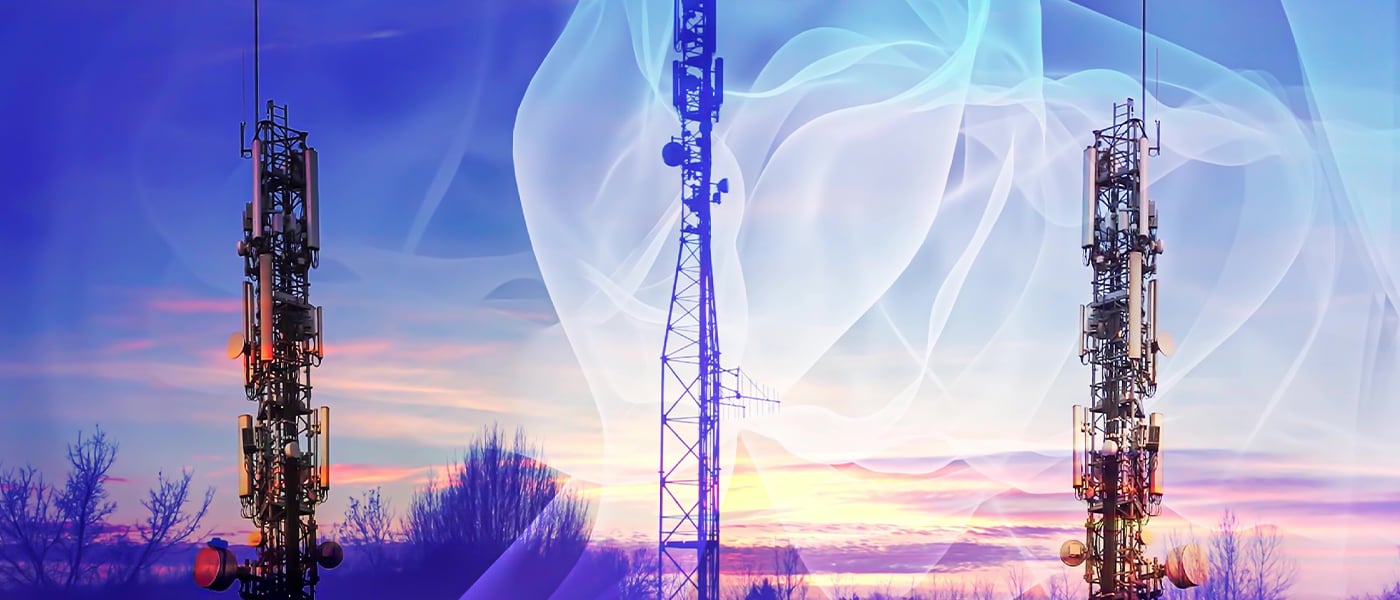March 23, 2023

Related Blogs:
Sign up for blog updates
Get innovation delivered to your inbox. Sign up for our blog and stay on top of the very latest from Semtech (formerly Sierra Wireless).
March 23, 2023

For 5G to offer an experience that's noticeably better than 4G, it needs broad, dedicated channels, which is where C-band comes in. But what exactly is C-band, and what does it mean for the future of 5G wireless connectivity? Here we’ve outlined some of the top questions people have on the subject, alongside some answers and explanations. We hope that this Q&A will be helpful to those seeking to better understand C-band spectrum and how it is being leveraged to deliver on the promise of 5G.
C-band and the other mid-band frequencies offer more than just fast cell phone video downloads and streaming speeds. Enhanced 5G performance is driving advances in IoT applications for public safety, industrial automation, utilities and fixed wireless access (FWA).
Public Safety Responders will use 5G’s enhanced performance to improve their communications, response times and safety. Law enforcement officers can gain real-time situational updates from additional network sources including drone videos, building videos and other first responder communication feeds. Firefighters will be able to use real-time augmented reality (AR) to see inside smoky buildings and leverage robotic resources. EMS personnel will have improved medical data and real-time communications with doctors and hospitals.
Manufacturers can leverage high bandwidth and low latency 5G private networks to gain flexibility and cost savings for industrial automation, manufacturing, and distribution by connecting machinery to cloud-based programmable logic controllers (PLCs). 5G private networks can also control robotics and vehicles within factories and warehouses, delivering superior communications compared to existing Wi-Fi networks.
Utilities can increase power grid efficiency by wirelessly connecting and controlling critical power grid functions such as detecting and isolating faults in milliseconds. Utilities can gain flexibility and cost savings compared to running fiber optic or copper cables, improve renewable energy integration with real-time Feeder Automation (FA) monitoring, and monitor and manage critical grid components including reclosers, voltage regulators and capacitor banks.
Fixed Wireless Access offers a faster and less expensive alternative to laying copper or fiber cable. Mid-band 5G can be used as a substitute for cable-based broadband in homes or offices. 5G also facilitates communications between branch store locations and kiosks. 5G can help bridge the digital divide by providing broadband quality internet to entire communities. 5G cellular routers can also be for business failover should cable broadband be interrupted.
Sierra Wireless offers a family of 5G wireless routers including the AirLink® XR90 and the AirLink® XR80 that operate in the C-band spectrum and other sub-6GHz bands. These routers were designed from the ground up to deliver the highest performance 5G, Wi-Fi 6 and gigabit Ethernet connectivity. The AirLink® XR routers are purpose-built to maximize connectivity, reliability, and security for mission-critical and business-critical applications in all environmental conditions.
The AirLink® XR90 is optimized for mobile mission-critical applications in transit, rail and first responder fleets.
The AirLink® XR80 delivers optimal capabilities for fixed and mobile applications in public safety and field service fleets, Fixed Wireless Access, SCADA and industrial IoT.
Sierra Wireless has more than 25 years of cellular-first experience, helping public safety and infrastructure organizations deploy reliable and cost-effective wireless solutions. As a part of the global cellular technology ecosystem, our partnership with all major cellular carriers ensures you have the performance and connectivity required for your mission-critical and business-critical applications.
The following Sierra Wireless resources provide more details.
Start with Sierra to learn more on how you can leverage C-Band for 5G wireless IoT applications that allow you to unlock value in today’s connected economy.
Semtech®, the Semtech logo, and AirLink® are registered trademarks or service marks of Semtech Corporation or its affiliates. Other product or service names mentioned herein may be the trademarks of their respective owners.
Get innovation delivered to your inbox. Sign up for our blog and stay on top of the very latest from Semtech (formerly Sierra Wireless).